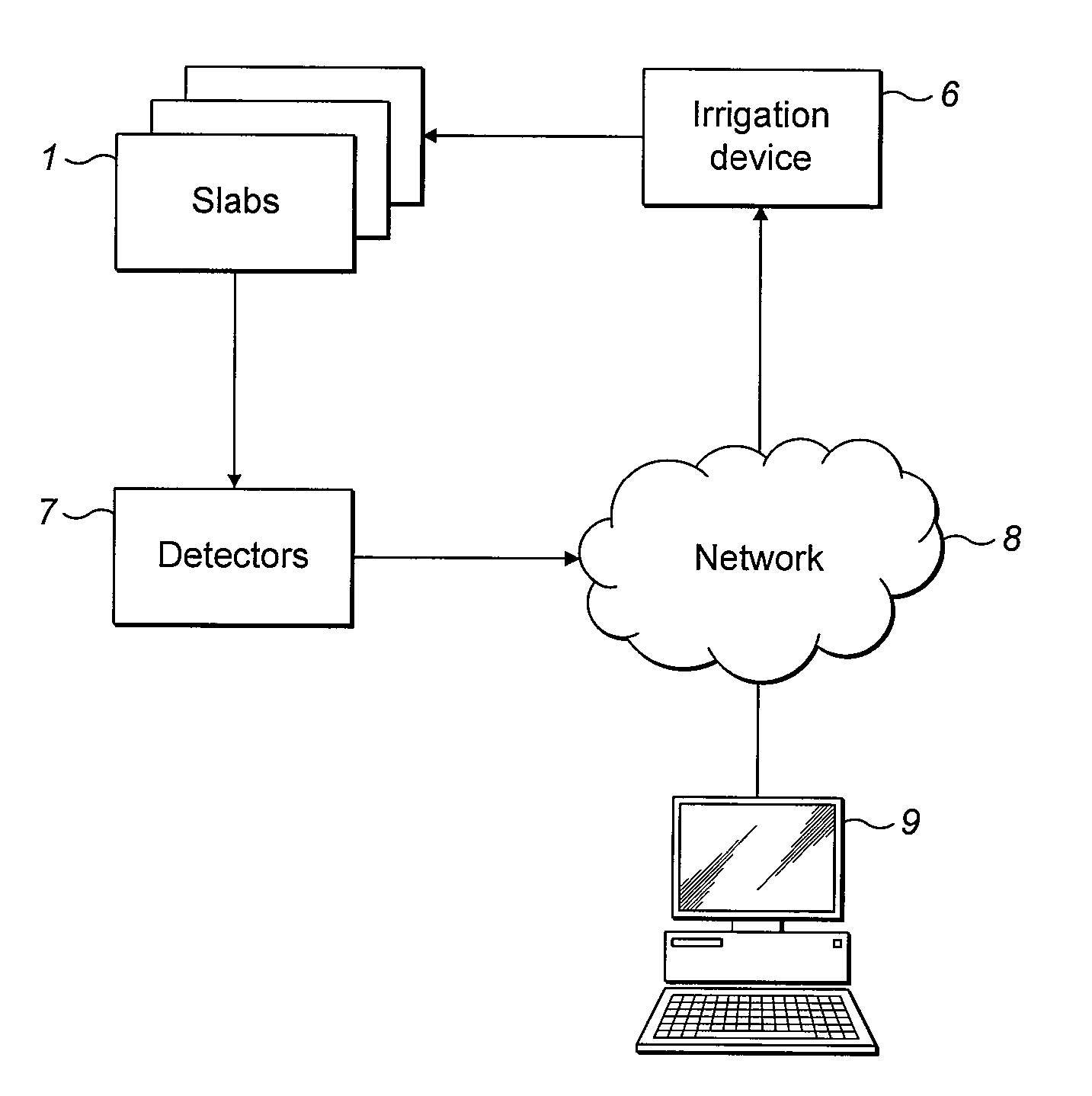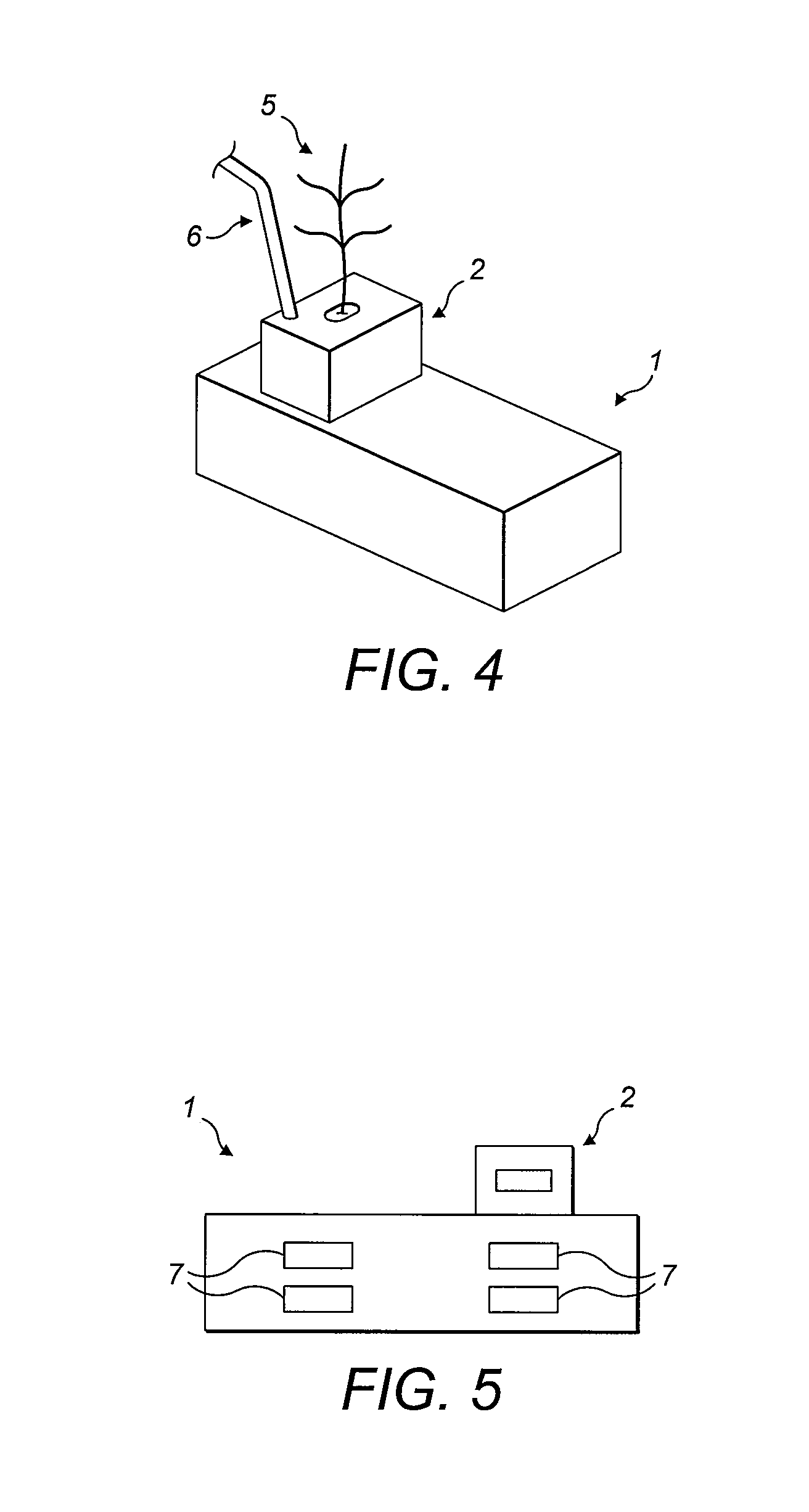Plant growth system
a growing system and plant technology, applied in the direction of instruments, computer control, renewable energy machines, etc., can solve the problems of increased pressure, difficult disposal of waste water containing such nutrients, and high cost of nutrient acquisition, so as to reduce the flow speed
- Summary
- Abstract
- Description
- Claims
- Application Information
AI Technical Summary
Benefits of technology
Problems solved by technology
Method used
Image
Examples
Embodiment Construction
[0104]Referring to FIG. 1, there is shown a mineral wool slab 1 having a first layer of a first density disposed above a second layer of a second density. The slab 1 has a volume of 6.8 litres, although more generally for preferred embodiments the volume may be in the range of 3 litres to 20 litres, more preferably in the range 5 litres to 15 litres, and most preferably in the range 5 to 11 litres. Some embodiments comprise a slab with a volume in the range 6 litres to 8 litres. In other embodiments, the volume may lie in the range of 3 litres to 15 litres, or 3 litres to 10 litres, for example. An alternative preferred embodiment comprises a slab having a volume of 9 litres. The slab may comprise multiple layers, including a bottom layer and a top layer, whose growth conditions may vary relative to one another.
[0105]As is the case in the embodiment shown in FIG. 1, it is preferable that the height of the bottom layer is greater than that of the top layer. For example, the ratios be...
PUM
 Login to View More
Login to View More Abstract
Description
Claims
Application Information
 Login to View More
Login to View More - R&D
- Intellectual Property
- Life Sciences
- Materials
- Tech Scout
- Unparalleled Data Quality
- Higher Quality Content
- 60% Fewer Hallucinations
Browse by: Latest US Patents, China's latest patents, Technical Efficacy Thesaurus, Application Domain, Technology Topic, Popular Technical Reports.
© 2025 PatSnap. All rights reserved.Legal|Privacy policy|Modern Slavery Act Transparency Statement|Sitemap|About US| Contact US: help@patsnap.com



